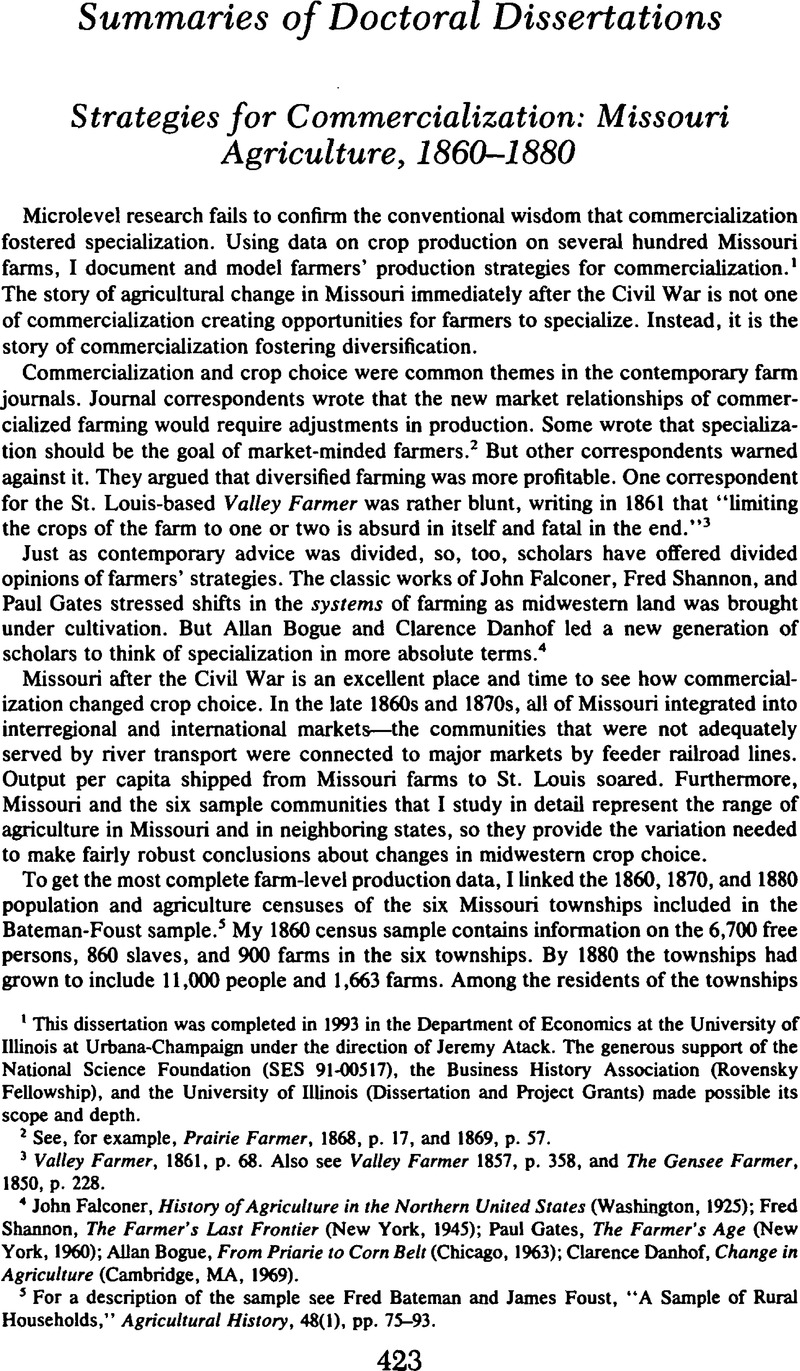Published online by Cambridge University Press: 03 March 2009

1 This dissertation was completed in 1993 in the Department of Economics at the University of Illinois at Urbana-Champaign under the direction of Jeremy Atack. The generous support of the National Science Foundation (SES 91–00517), the Business History Association (Rovensky Fellowship), and the University of Illinois (Dissertation and Project Grants) made possible its scope and depth.
2 See, for example, Prairie Farmer, 1868, p. 17, and 1869, p. 57.Google Scholar
3 Valley Farmer, 1861, p. 68.Google Scholar Also see Valley Farmer 1857, p. 358Google Scholar, and The Gensee Farmer, 1850, p. 228.Google Scholar
4 Falconer, John, History of Agriculture in the Northern United States (Washington, 1925)Google Scholar; Shannon, Fred, The Farmer's Last Frontier (New York, 1945)Google Scholar; Gates, Paul, The Farmer's Age (New York, 1960)Google Scholar; Bogue, Allan, From Priarie to Corn Belt (Chicago, 1963)Google Scholar; Danhof, Clarence, Change in Agriculture (Cambridge, MA, 1969).Google Scholar
5 For a description of the sample see Bateman, Fred and Foust, James, “A Sample of Rural Households,” Agricultural History, 48(1), pp. 75–93.Google Scholar
6 See David, Paul, “The Mechanization of Reaping,” in Rosovsky, H. (ed.), Industrialization in Two Systems (New York, 1966)Google Scholar, and Rogin, Leo, The Introduction of Farm Machinery (Berkeley, 1931).Google Scholar
7 See, for example, McGuire's, Robert A. discussion of populism in “Economic Causes of Late Nineteenth-Century Agrarian Unrest: New Evidence,” this Journal, 41 (12 1981), pp. 835–852.Google Scholar
8 Among the first to state this hypothesis was German agriculturalist Theodor Brinkmann. See Theodor Brinkmann's Economics of the Farm Business, translated by Benedict, M. R. (Berkeley, 1935).Google Scholar
9 Many thanks to Sean Hartnett for sharing his computer mapping expertise.